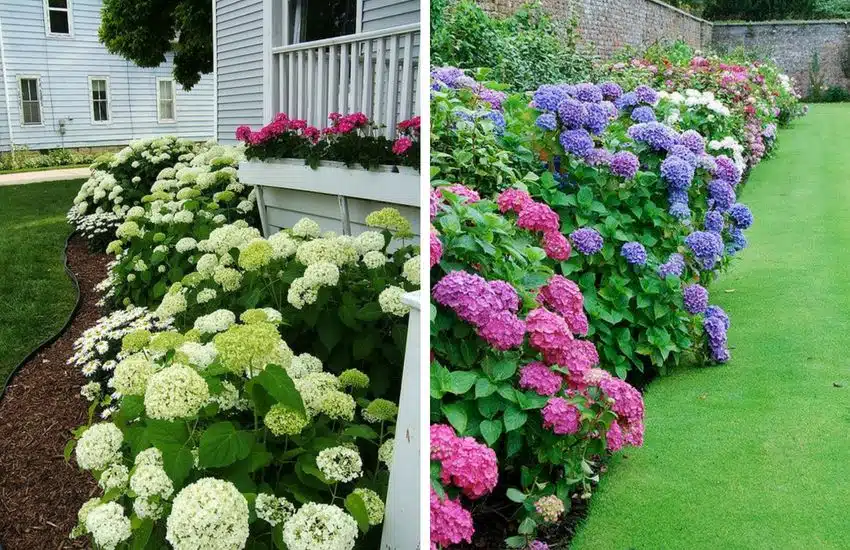Hydrangea Haven: Finding the Perfect Spot for Your Bush
Understanding Hydrangea Needs: A Guide to Optimal Planting
When it comes to planting a hydrangea bush, choosing the right location is crucial for its growth and blooming. The key to success lies in understanding the specific needs of these beautiful shrubs. Hydrangeas require a delicate balance of sunlight, soil, and water to thrive. By selecting a spot that meets these needs, you’ll be rewarded with vibrant blooms and a lush, healthy plant. So, where to plant hydrangea bush? Let’s dive into the essential factors to consider when selecting the perfect location for your hydrangea. From soil pH to sunlight patterns, every detail counts in creating a hydrangea haven.
How to Choose the Right Soil for Your Hydrangea
Soil is a critical component of a hydrangea’s growth and blooming. When selecting a location for your hydrangea bush, it’s essential to consider the soil’s pH level, nutrient content, and drainage capabilities. Hydrangeas thrive in slightly acidic to neutral soils, with a pH range of 6.0 to 7.0. Soil with poor drainage can lead to root rot, while soil lacking essential nutrients can hinder blooming. To test your soil, use a DIY kit or send a sample to a lab for analysis. Based on the results, amend the soil with organic matter like compost or well-rotted manure to achieve optimal conditions. By doing so, you’ll create a fertile foundation for your hydrangea to flourish, making it easier to determine where to plant hydrangea bush for maximum success.
Hydrangea Sunlight Requirements: Morning, Afternoon, or Full Sun?
Hydrangeas have specific sunlight requirements to thrive, and understanding these needs is crucial when deciding where to plant hydrangea bush. While hydrangeas can tolerate some shade, they generally require at least partial sun to produce vibrant blooms. Morning sun, which is gentler and less intense, is ideal for hydrangeas, as it promotes healthy growth and blooming. Afternoon shade, especially in warmer climates, can help prevent scorching and heat stress. However, full sun can also be beneficial, especially for varieties that require more intense light. To determine the sunlight patterns in your yard, observe the area throughout the day, taking note of the duration and intensity of the sun’s rays. This will help you choose the perfect spot for your hydrangea bush, ensuring it receives the right amount of sunlight for optimal growth and blooming.
Watering Wisdom: Avoiding Overwatering and Underwatering
Proper watering is crucial for hydrangeas, as they require consistent moisture to thrive. However, overwatering and underwatering can be detrimental to their health. To determine the ideal watering schedule for your hydrangea, check the soil moisture by inserting your finger into the soil up to the knuckle. If the soil feels dry, it’s time to water. Avoid getting water on the leaves or flowers to prevent fungal diseases. Instead, water at the base of the plant, allowing the soil to absorb the moisture. When deciding where to plant hydrangea bush, consider the soil’s drainage capabilities and adjust your watering schedule accordingly. In areas with heavy rainfall or poor drainage, it’s essential to take precautions to prevent waterlogged soil, which can lead to root rot. By adopting a thoughtful watering approach, you’ll be able to provide your hydrangea with the right amount of moisture, ensuring it grows and blooms beautifully.
Protecting Your Hydrangea from Extreme Weather Conditions
Hydrangeas are sensitive to extreme weather conditions, which can impact their growth and blooming. To ensure your hydrangea thrives, it’s essential to provide protection from harsh weather elements. Frost, in particular, can be detrimental to hydrangeas, so it’s crucial to take precautions during the winter months. Mulching around the base of the plant can help insulate the soil and protect the roots from freezing temperatures. Windbreaks, such as burlap or snow fencing, can also be used to shield your hydrangea from strong winds and frost. In areas prone to extreme temperatures, consider planting your hydrangea in a location that provides some protection, such as near a wall or under a tree. When deciding where to plant hydrangea bush, consider the local climate and take steps to mitigate the impact of extreme weather conditions. By providing your hydrangea with the necessary protection, you’ll be able to enjoy its beautiful blooms for years to come.
Considering Companion Planting: What to Plant with Hydrangeas
When deciding where to plant hydrangea bush, it’s essential to consider the benefits of companion planting. By selecting plants that complement hydrangeas, you can create a thriving and visually appealing garden. Plants like ferns, hostas, and daylilies make excellent companions for hydrangeas, as they provide shade, texture, and color contrast. Additionally, plants like roses, lavender, and coneflowers can help attract pollinators and add to the overall beauty of your garden. When choosing companion plants, consider factors like plant spacing, growth rates, and soil requirements to ensure a harmonious and balanced garden ecosystem. By incorporating companion planting into your garden design, you can create a stunning and resilient landscape that showcases your hydrangea bush.
Hydrangea Bush Placement: Creating a Beautiful Landscape Design
When deciding where to plant hydrangea bush, it’s essential to consider the overall landscape design. A well-planned layout can enhance the beauty of your hydrangea and create a visually appealing garden. Start by assessing your yard’s layout, taking note of the existing plants, trees, and hardscapes. Consider the mature size of your hydrangea bush and leave enough space for it to grow. Grouping hydrangeas with other plants can create a stunning display of color and texture. For a cohesive look, choose plants with similar growing conditions and maintenance requirements. Visual balance is also crucial, so consider the height, shape, and color of your plants when placing them in your landscape. By incorporating hydrangea bushes into your landscape design, you can create a beautiful and thriving garden that showcases these stunning plants.
Common Mistakes to Avoid When Planting Hydrangeas
When deciding where to plant hydrangea bush, it’s essential to avoid common mistakes that can hinder the growth and blooming of these beautiful plants. One of the most critical mistakes is planting too deeply, which can cause the roots to rot and the plant to struggle. To avoid this, make sure to plant the hydrangea at the same depth as it was in the pot, and gently firm the soil around the roots. Another mistake is neglecting soil preparation, which can lead to poor drainage and nutrient deficiencies. Before planting, test the soil pH and amend it if necessary, and add organic matter like compost to improve soil structure and fertility. Failing to provide adequate support is also a common error, especially for bigleaf hydrangeas that can grow quite large. Use stakes or trellises to provide support and keep the plant upright. By avoiding these common mistakes, you can ensure that your hydrangea bush thrives and provides years of beauty and enjoyment.


:max_bytes(150000):strip_icc()/summer-blooming-oakleaf-hydrangeas-2132724-09-128eb6d70f844a0c8f8eb984bea6c6d7.jpg)





